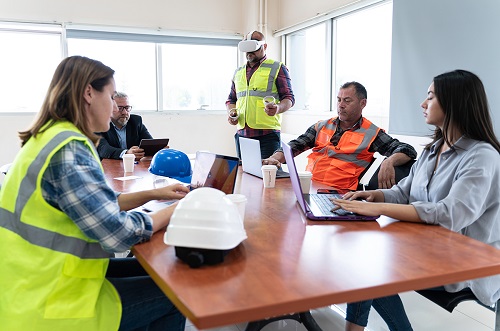Get ready for a safety revolution! Imagine practicing dangerous jobs without any real danger. That is what virtual reality (VR) safety training does. It is changing how workers learn to stay safe in all kinds of jobs, from building skyscrapers to working in hospitals.
So, what is VR safety training? It is a new way to learn about job safety. Workers wear special headsets that show them fake but realistic work situations. They can practice dealing with risky tasks without getting hurt. It is like an advanced video game but for work!
The advantages of using this technology are that it often costs less and is easier than traditional training methods. Plus, all workers get the same information. For the workers, it is fun and helps them better remember what they learn. They can practice as much as they want until they feel ready.
VR training makes work safer. This means fewer accidents, less wasted time, and helps the company’s bottom line. It also helps companies follow safety rules and regulations better.
These are some of the many industries leading this tech revolution and making their workers safer and smarter:
1 Construction.
VR simulations allow workers to practice hazard recognition, fall protection, and equipment operation in a safe virtual environment.
2 Manufacturing.
Companies like BMW use VR to train employees on factory setup, lean manufacturing principles, and proper work procedures.
3 Automotive.
Peugeot employs VR to teach ergonomic work postures and soft skills for better communication among co-workers.
4 Offshore operations.
Companies like Safeway use VR simulations to train personnel on tasks such as telescoping and transporting people and supplies during offshore operations.5 Personal protective equipment (PPE).
3M, among others, offers VR training modules for fall protection, harness inspection, and welding helmet use.
6 Driving.
VR driving simulators help train and assess drivers in a risk-free environment, covering aspects like pre-trip inspections and hazard avoidance.
7 Emergency response.
Fire departments use VR earthquake simulators to prepare for disaster scenarios.
8 Health care.
VR allows surgeons and medical students to practice complex procedures in a risk-free environment. It also provides nurses with VR training in resuscitation, post-surgical management, and high-pressure emergencies.
9 Mining.
VR projects for mining include rescue and escape training and enhanced hazard recognition by using eye-tracking glasses.
VR safety training is improving workplace safety across many industries, offering a cost-effective, engaging, and risk-free way to prepare workers for real-world challenges. If your company would like free, confidential, on-site help to ensure your workplace is safe and complying with OSHA regulations, contact a safety specialist with the Texas Occupational Safety and Health Consultation (OSHCON) Program at 800-252-7031, option 2, or OSHCON@tdi.texas.gov.

